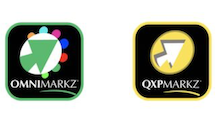Digital fatigue is a phrase that keeps cropping up lately in relation to people’s reading habits. I saw it again, most recently, in a global survey conducted by Two Sides, which included South African respondents. And South Africans, it seems, want to buck the trends.
We’re constantly bombarded by digital communications of all types – everything from advertising to content marketing and even fine literature. But, as the survey report points out, people share more than 2,4 million pieces of content on Facebook every minute. Admittedly, it’s not long form reading, but there’s just so much of the stuff that we spend a lot of time looking at our backlit devices. And that worries us.
The good news for commercial print service providers is that print is far from dead. But then most of them already knew that. And the logical conclusion, also reached by the survey, is that’s because people like to read printed material.
But it’s what people prefer to read in print that I found interesting because it shapes how print service providers can structure their diversifying businesses on the back of much more capable digital equipment – sometimes sitting alongside litho equipment and a wider range of finishing kit than ever before. It’s a brave new world but exploring it can be daunting if you’re unsure which direction to pursue.
The survey report, and I encourage you to read it entirely as it is freely downloadable at twosides.info, finds that people prefer reading printed books, magazines and newspapers. People understand more when they read it in print, more of them trust news from print sources but, perhaps curiously, three-quarters still get their news from digital sources even when the majority are worried about fakery.
People like news on digital devices. They also prefer digital devices for reading bills and other transactional documents. Unless they contain sensitive personal information, like tax and health-related documents. For those they prefer printed material that they feel is more securely stored in a file at home. And they definitely prefer printed magazines and books. Print dominates in longer form content. People spend more time reading printed books and magazines than the digital counterparts and they respond better to advertising and other marketing communications in print.
And their top concerns with backlit devices are that they cause eyestrain, headaches, and deprive us of sleep. So it’s most likely that people read printed material in the comfort of their own homes before they go to bed.
But the survey finds something else very interesting. South Africans like print the least of all the nationalities surveyed. Germans, French, and Brazilians like it the most – upwards of 50 and even 60% of them prefer it. But just 38% of South Africans prefer print. But maybe that’s not the whole truth.
Recent statistics circulating local digital news sites suggest that just 14% of South Africans read books and that we have too many illiterate countrymen. Maybe that’s the reason. But it can also suggest that nearly half of all literate South Africans like to read printed books, which is more in line with the global averages.
The literate, economically active portion of South Africa’s population is slowly changing, not always for the better, but it remains roughly the same size in absolute numbers. And, taken in context, the numbers appear to concur with trends elsewhere in the world. That’s a positive sign for print service providers who want more substantial information to drive their investments in advanced digital technologies to meet the resurgent demand for physical, printed material that meets basic human needs: sound sleep, healthy vision and pain-free reading.





















